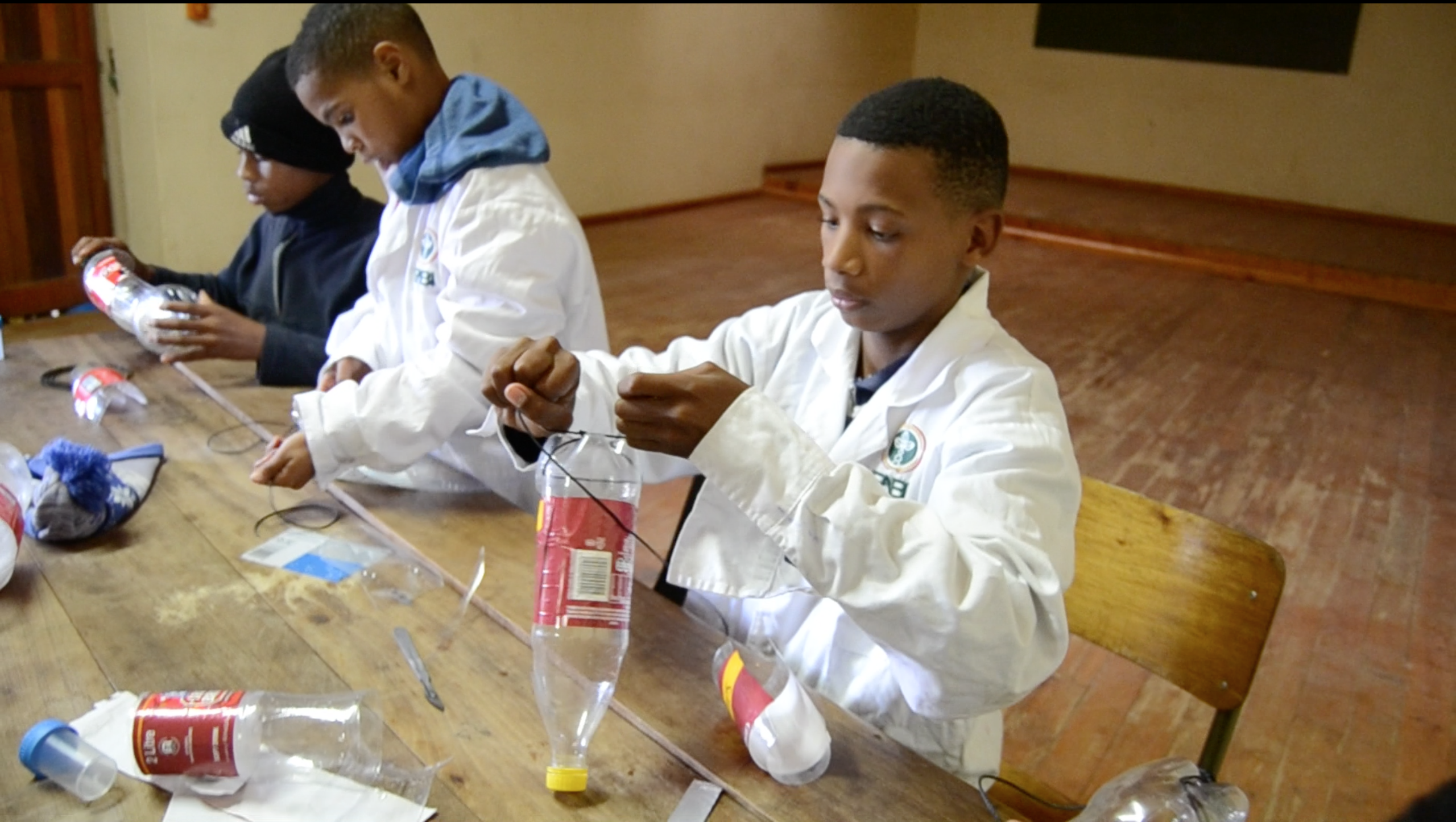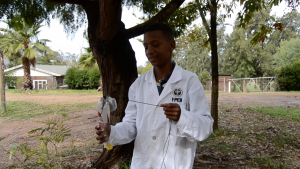Bearded Beetle Biodiversity

Contribute to Research from your Backyard!
The objective of this project is to reveal the diversity of bark and ambrosia beetles in the Greater Cape Floristic Region. Join us in the hunt for these flying beetles!
We have adapted a protocol from our friends that are leading the BackYard Bark Beetle project based in the USA. They have developed a simple, low-cost and fun way to collect beetles using 2-litre cold-drink bottles (see the methods section below for instructions).
We refer to these beetles as ‘bearded’ because they have evolved mycangia (tiny hairs) that collect and house their fungal symbionts.That is right, these beetles have a complex, but essential, partnership with fungi! The fungal communities and the beetles help each other survive, forming a symbiosis.
Therefore, we are not just interested in the diversity of the beetles, but also the diversity of the fungi that these beetles carry in their beards!


The perfect activity for your classroom
Learners throughout South Africa are invited to release their inner scientist by contributing to this research. Relate your coursework to the big picture by engaging your learners as citizen scientists.
Below we have listed some teacher testimonies about citizen science. See the methods section below to learn how to participate and then contact us to start conducting research!
We tested the youth engagement of this project with a couple groups of Cape Nature Junior Rangers in 2018. The youth loved the activity and we were able to capture a few different species of beetles. Now we are ready for more groups to participate.
Teacher Testimonials
A4: We've seen that students are incredibly motivated by the real-world nature of #CitizenScience. Data have real use. #CitSciChat
— BirdSleuth (@BirdSleuth) September 9, 2015
#CitSci as a type of experiential learning in the classroom gives students entry into authentic scientific inquiry.http://t.co/qYznkFSykH
— MLMP (@MLMPCitSci) September 10, 2015
A2: My students took learning more serious & got excited when doing #CitSci because they were contributing to something bigger #CitSciChat
— Jessie Oliver (@JessieLOliver) September 9, 2015
A2 Students engage in #citizenscience project and see how their data/findings relate to a bigger picture #CitSciChat 1/4
— Your Wild Life Team (@YourWild_Life) September 9, 2015
Methods to be Involved
 Contact us for a copy of a presentation (pdf) that you can use to introduce learners to the importance of biodiversity, the roles of insects, the impacts of invasive species, the beetle-fungi symbiosis, and the research we are conducting.
Contact us for a copy of a presentation (pdf) that you can use to introduce learners to the importance of biodiversity, the roles of insects, the impacts of invasive species, the beetle-fungi symbiosis, and the research we are conducting.
The second step is to construct the traps we will use to collect beetles. These methods were pioneered by the researchers that lead the Backyard Bark Beetles project.
You will need the following materials:
- 2-litre plastic cold-drink bottle
- Hand-sanitiser (containing ethanol or equivalent)
- Scissors
- String
Then follow the instructions available here:
 Set up traps in areas of your choosing, near trees if possible. We recommend building the traps in your classroom, then allowing the learners to take the traps home and collect beetles in their neighborhood.
Set up traps in areas of your choosing, near trees if possible. We recommend building the traps in your classroom, then allowing the learners to take the traps home and collect beetles in their neighborhood.
We recommend sorting the beetles with your class to increase the educational impact. Beetles can be sorted based on their size and color or more fine- scale differences if you have a microscope (antennae, head and abdomen shapes, etc). Assessing this diversity might provide an enhanced learning experience about the incredible biodiversity in South Africa. You can also contact us for more ideas to incorporate additional learning objectives.
Send us the beetles you collected so that we can include them in our research. We will identify the beetles and their fungal associates in our laboratory in Stellenbosch.
Submit samples to:
Attn: J. Hulbert or F. Roets,
Department of Conservation Ecology and Entomology,
JS Marais Building,
Stellenbosch University,
Matieland, 7600
